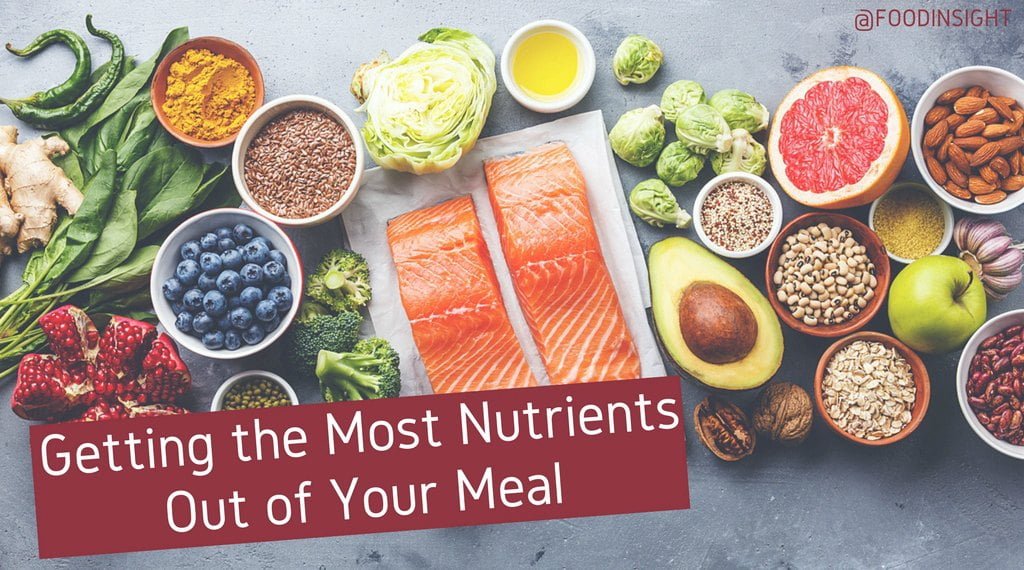The first article in our “Go Further with Food” series focused on food waste. Now we turn our attention from throwing out less food to throwing in more nutrient-dense food to further our health.
Food has a lot offer. It’s how we sustain life and it’s a big part of how we enjoy life too. But food can also present a conundrum. While it’s critical that we each get enough to eat, eating too much too often can be detrimental to health as well. And even if we consume the right amount of food, we also have to think about getting the right amount and types of nutrients. Striking the right balance between nutritional quality and calorie quantity, a ratio that describes the nutrient density of our diet, isn’t always easy to do.
How do we know if something is nutrient-dense?
Nutrient density can be a tricky concept to understand. Luckily, the 2015-2020 Dietary Guidelines for Americans (DGA) has taken care of the definition of “nutrient-dense” for us. And as it turns out, it’s not just about the foods, but how they’re prepared as well.
According to the DGA, “All vegetables, fruits, whole grains, seafood, eggs, beans and peas, unsalted nuts and seeds, fat-free and low-fat dairy products, and lean meats and poultry — when prepared with little or no added solid fats, sugars, refined starches, and sodium — are nutrient-dense foods.”
How can you increase the nutrient density of your diet?
Every food choice presents the opportunity to increase the nutrient density of our diet, but not everything we eat needs to be nutrient-dense. Rather, the goal is for the overall diet to be nutrient-dense.
One way to do this is by thinking more critically while grocery shopping, since that’s where many of our eating patterns begin to take shape. Nutrient-dense foods can be found in every aisle of the grocery store, so eating more of them doesn’t mean you have to give up your favorite foods. It does, however, require spending time comparing food labels and choosing the more nutrient-dense option more often.
Let’s take pasta, for example. Imagine you’re making lasagna and choosing between three types of noodles. They are nutritionally identical in every way, except for whole grains and fiber:
- Option #1 is 0% whole grain wheat and has 2 grams of fiber per serving
- Option #2 is 50% whole grain wheat and has 6 grams of fiber per serving
- Option #3 is 100% whole grain wheat and has 6 grams of fiber per serving
Which do you choose? If you wanted the most nutrient-dense lasagna noodle, it would be option #3 (the most whole grains, more fiber than option #1, same fiber as option #2). If you were looking to make a more nutrient-dense choice, choosing option #2 over option #1 would be the way to go.
This isn’t to say that option #1 should never be chosen — some people don’t always appreciate the taste or texture of whole grain noodles. And it doesn’t always have to be one or the other; sometimes it can be a mix. Try making half your grains whole grains by subbing in whole grain noodles for half of the refined grain pasta.
Even without using whole grain noodles, you can still make a more nutrient-dense lasagna by modifying your preparation methods (e.g. use less oil, butter or salt) and selecting other ingredients like meat, cheese and pasta sauce that are lower in sodium, saturated fat and added sugars than you might usually choose.
Making a meal more nutrient-dense doesn’t just have to be about what you take out — it’s also about what you put in. Vegetables are low in calories and high in nutrients, which always makes them a good nutrient-dense choice. Go further with your food explorations and try adding your favorite veggies to your next meal, even if the recipe doesn’t call for it. And if you’re in need of healthful inspiration, check out our pasta infographic for creative ideas to help your food further your health.
This blog includes contributions from Alyssa Ardolino, RD and Allison Webster, PhD, RD.
